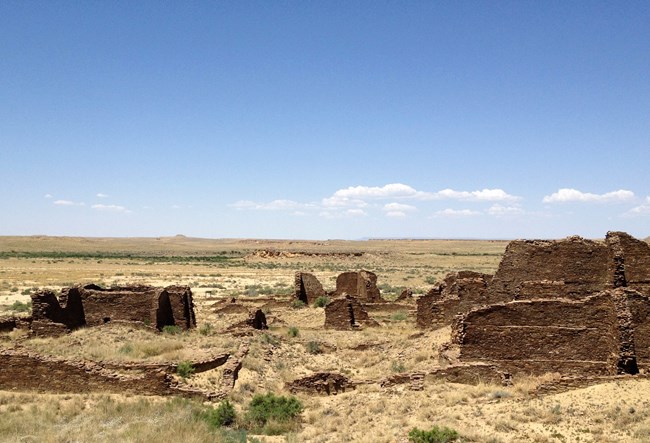
NPS Photo
National Park Service (NPS) planning and assessment includes evaluating park natural resource conditions and threats, developing park management plans and strategies, and following requirements of the National Environmental Policy Act (NEPA). In addition, we work with federal, state, and local agencies to ensure that air pollution from proposed actions outside national parks do not harm park resources.
Park planning
National park managers need to understand current and desired conditions of air quality and related resources in order to effectively manage them in parks. The emphasis that a park places on air resources, especially as part of planning documents, informs and influences effective engagement in park decision-making.
All federal agencies, including the NPS, are required by NEPA to assess and consider the environmental impacts of proposed activities. For some projects, air quality is an important resource topic that must be addressed in the NEPA analysis. The NPS Air Resources Division has developed guidance documents to assist parks and regional NEPA planners in determining:
- whether an air quality analysis is necessary
- what level of analysis is appropriate
- what factors should be considered
- what types of data and methods should be used
- whether predicted air quality effects in national parks are negligible, minor, moderate, or major
Working with partners
The NPS comments on proposals of other federal and state agencies that may affect NPS resources. Working with external partners is key to protecting air quality and sensitive resources in national parks because most air pollution affecting parks comes from sources outside park boundaries. Although the NPS has legal responsibility to protect park air quality related values (AQRVs), we do not have direct authority to control sources of pollution located outside of parks. However, states, tribal governing bodies, and the EPA (our regulator partners) are required to consult with the NPS to address impacts to parks in their air pollution control plans.
Actions taken by other federal agencies can also affect air quality and AQRVs in national parks. We work collaboratively with these agencies to ensure that potential air quality effects on park resources are adequately addressed.
Federal oil and gas planning and development, addressed through the NEPA process, is a common type of external project the NPS reviews for air quality effects. The Department of the Interior, the Department of Agriculture, and the EPA released an interagency Memorandum of Understanding (MOU) on air quality issues associated with onshore oil and gas development on public lands. This agreement establishes an interagency collaborative process to address air quality and sensitive resources for oil and gas planning and development projects. Many provisions in this agreement are relevant to national park air quality. Learn more »
Last updated: March 13, 2018
